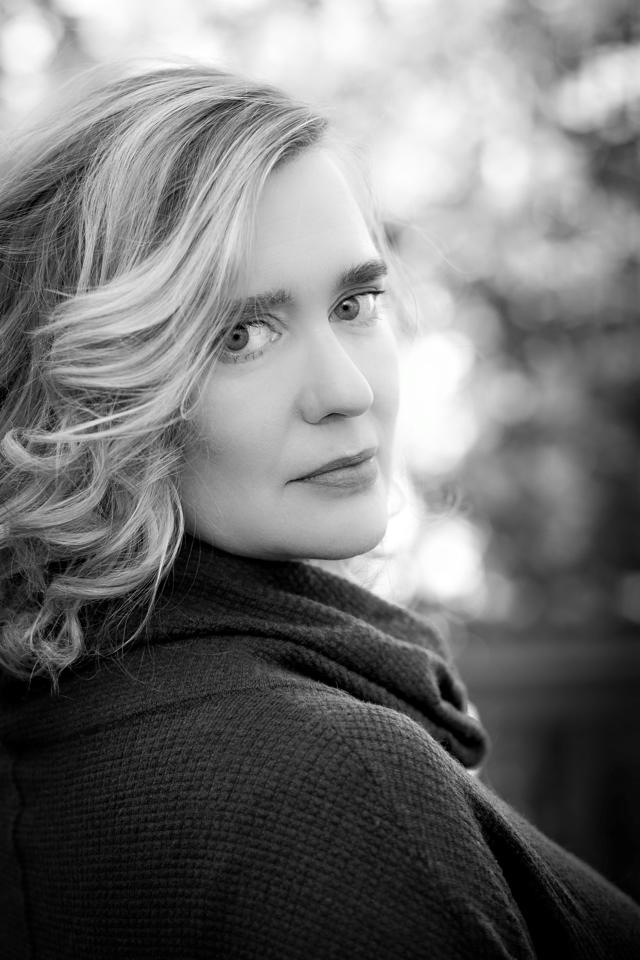On March 1, UWG English professor Dr. Margaret Mitchell discussed her upcoming novel in the writers series “The Other Night School” based on the life of the near forgotten turn-of-the-century supermodel.
The “Stranger than Fiction” talk gained its twhich alludes to the novel rooted in a true story ripe with murder, beauty and an insane asylum.
“The novel is about this woman who is widely seen as America’s first supermodel,” says Dr. Mitchell. “She was an artist’s model in the 20th century and born in 1891. As a teenager, she was discovered and she began modeling for artists, mostly sculptures but occasionally painters. And she became extremely famous. Her name is Audrey Munsen.”
Despite her fame, at age 40 Audrey Munsen was committed to St. Lawrence State Hospital by her own mother and lived there for 65 years. During the last years of her life, Mitchell was a young girl and her own great grandfather was the superintendent of the mental asylum.
“[The novel’s] not out yet and it’s not sold yet but the [Stranger than Fiction] talk [was] about how I settled on the idea and the genesis of the novel,” says Mitchell. “What’s fun about this particular novel is that it came out of an interest in family history for me.”
Mitchell never interacted or knew of Munsen when she was a child and the focus on the forgotten supermodel was only discovered through the process of extracting her memories and researching asylums.
“Every now and again, my dad would drive us around [the asylum] and he would tell us stories,” says Mitchell. “He had actually lived there as a child. That idea always seemed to me, even as a kid, like something I had to write about someday.”
Mitchell initially approached the story thinking about a story centered on her grandmother who would have been living in a mansion on the same grounds as an asylum. However, as she researched the St. Lawrence State Hospital and other asylums, she was drawn to the dramatic and somewhat tragic life and career of Audrey Munsen.
The model and actress dropped out of the societal spotlight several times in her career, only being rediscovered once when a doctor in her old apartment building in New York ended up murdering his wife and had obsessed himself over Munsen during her stay in the apartment. He even possessed a photo of her which connected her to the murder even though she was in Canada at the time of the investigation. In that time, she received sensationalized publicity before fading into obscurity afterwards.
During her time of fame, she was also an actress in four silent films and best known for appearing nude in a non-pornographic film. She was also a model in high demand who posed for the 1915 Panama–Pacific International Exposition in San Francisco. She has since been immortalized in over twelve statues in New York and many other places, including Piedmont Park’s “Triumph of Peace” in Atlanta.
“Audrey thought of herself as an artist,” says Mitchell. “There are still sculptures of her all over because it was the era of civic art, but her name isn’t on them anywhere. The name of the artist is. You might even see the name of the person who commissioned it but the name of the model isn’t anywhere to be found.”
As a historical narrative, the task of writing and crafting a fictional interpretation of Audrey Munsen’s life seemed a frightening challenge for Mitchell. Now she has completed the novel’s draft and moves on to getting it published.
The release and title of Mitchell’s novel is still to be determined. Until then, readers can check out her first published novel “Pretty Is” under the name Maggie Mitchell.
You may also like
-
UWG Prepares for 43rd Annual Media Day, Anticipates Valuable Networking Opportunity
-
The Psychology Student Association Offers Opportunities for Fun and Networking for Aspiring Psychologists at UWG
-
Table Talks Makes Its Return to the 43rd Annual Media Day
-
Connect and find Success at UWG’s Premier Media Networking Event
-
UWG Hosts Sip n’ Paint Event with Dine and Design to Celebrate Black History Month
